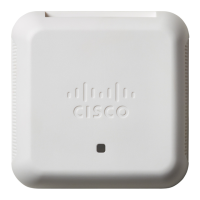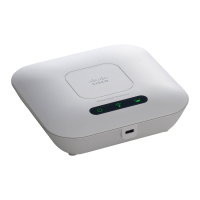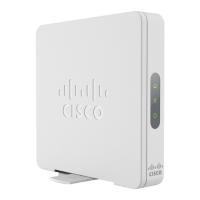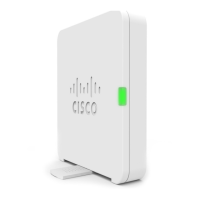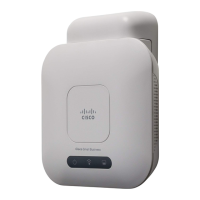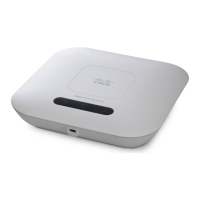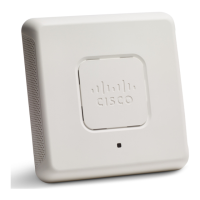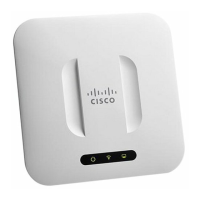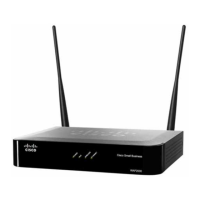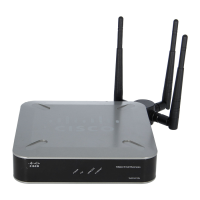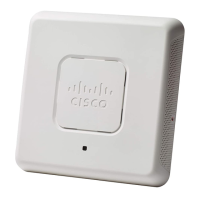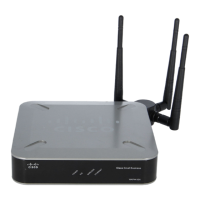CHAPTER 4
Wireless
This chapter describes how to configure the wireless radio properties. It includes the following topics:
• Radio, on page 47
• Networks, on page 52
• Client Filter, on page 58
• Scheduler, on page 59
• QoS, on page 60
Radio
The radio is the physical part of the WAP that creates a wireless network. The radio settings on the WAP
control the behavior of the radio and determine what kind of wireless signals the WAP emits.
To configure the wireless radio settings:
Step 1 Select Wireless > Radio.
Step 2 Radio Interface:
• Radio 1 (2.4 G) — Support 5G Radio with a 4x4 MIMO mode.
• Radio 2 (5 G) — Support 2.4G Radio with a 3x3 MIMO mode.
Step 3 In the radio setting per interface area, select the radio interface to which the configuration parameters will be applied.
Step 4 In the Basic Settings area, configure these parameters for the selected radio interface:
Local regulations may prohibit the use of certain radio modes. Not all modes are available in all countries.
Note
• Radio — Check Enable to enable the radio interface.
• Wireless Network Mode — The IEEE 802.11 standard and frequency the radio uses. The default value of Mode
is 802.11a/n/ac for Radio 1 and 802.11b/g/n for Radio 2. For each radio, select one of the available modes.
Radio 1 (2.4G) supports the following radio modes:
• 802.11b/g — 802.11b and 802.11g clients can connect to the WAP device.
• 802.11b/g/n (default) — 802.11b, 802.11g, and 802.11n clients operating in the 2.4-GHz frequency can connect
to the WAP device.
Cisco WAP150 Wireless-AC/N Dual Radio Access Point with PoE / Cisco WAP361 Wireless-AC/N Dual Radio Wall Plate Access Point with PoE
47
